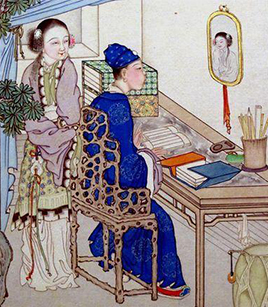Pu Songling and his ‘Liaozhai’

FILE PHOTO: A Qing Dynasty illustration of Liaozhai Zhiyi
Pu Songling (1640–1715) was an outstanding Qing Dynasty writer, best known for his masterpiece Liaozhai Zhiyi (hereinafter called Liaozhai), or Strange Tales from a Chinese Studio. Liaozhai is a collection of nearly 500 unusual and supernatural tales. Pu captured the personalities of ghosts, fox fairies, and other spirits in his book. He created an imagined world which was full of bizarre creatures and occurrences, where the extraordinary became ordinary.
Born to a literary family in decline, Pu was very talented. He spent most of his life in pursuit of scholarship, with a purpose of becoming a court official through the imperial examinations. However, he failed the imperial examinations time and again. It was not until he was 71 that he was awarded the Gongsheng degree for his achievement in literature rather than for passing the Imperial examinations. In order to make a living, Pu worked as a private tutor. He passed away four years after being awarded the Gongsheng degree.
Pu began collecting materials for Liaozhai in his twenties. It is said that he often set a roadside stand to offer tea to passers-by. Anyone who told him a bizarre story was given a free cup of tea. Pu’s thinking and literary creations were deeply influenced by his experiences. He was struck by the absurdity and unfairness of the imperial examination system and corrupt officials, yet could find no outlet for his frustrations. Meanwhile, he was deeply concerned about common people’s hardships, yet could find no way to help them in their struggles. This overlapping of two worlds, one absurd and charmed and the other harsh and real, inspired the idea of writing bizarre stories to allude to feudal society in a satirical way.
As soon as its preliminary form was published, Liaozhai attracted a wide readership among ordinary people, and soon gained the attention of scholars. In the 19th century, Western scholars began to translate sections of Liaozhai. Describing this work, the Encyclopedia Britannica notes that “Such traditional supernatural beings as fox spirits, assuming in these stories temporary human form in the guise of pretty women, became for the first time in Chinese fiction humanized and likable.”
Edited by REN GUANHONG
